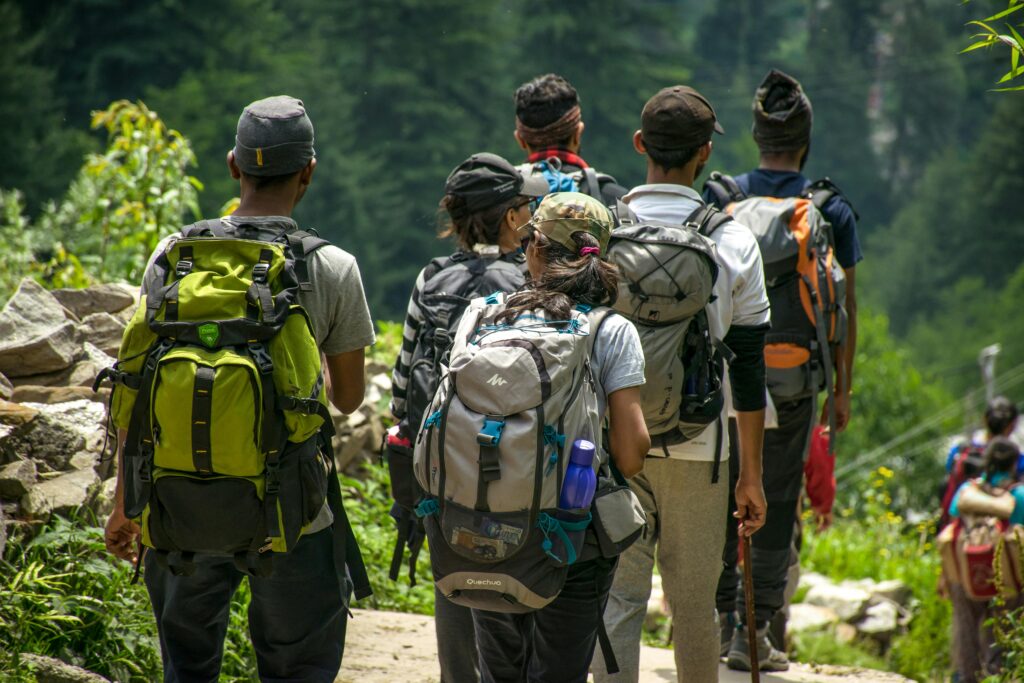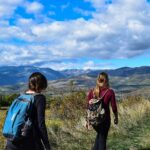Are you ready to leave the crowds behind and immerse yourself in wild, breathtaking landscapes for days at a time? Epic multi-day treks are the ultimate adventure for hikers who crave challenge, solitude, and the thrill of self-reliance. Whether you’re dreaming of the Himalayas, Patagonia, or a hidden trail closer to home, this guide will help you plan, prepare, and conquer your next long-distance hike.
Why Multi-Day Treks Are Life-Changing
Long-distance hikes are about more than just covering miles. They are journeys of discovery—of nature, of new cultures, and of yourself. Each day brings new vistas, challenges, and the satisfaction of pushing beyond your comfort zone. You’ll return home with stronger legs, a clearer mind, and stories you’ll tell for years.
1. Choosing the Right Multi-Day Trek
Assess Your Experience and Fitness
Not all treks are created equal. Some are gentle walks through rolling hills, while others are high-altitude expeditions with steep climbs and unpredictable weather. Be honest about your fitness, hiking experience, and comfort with remote environments. If you’re new to multi-day hiking, start with shorter routes and gradually build up to more demanding treks.
Research Destinations and Seasons
Consider what kind of landscapes and cultures excite you most. Some legendary multi-day treks include:
- Annapurna Circuit, Nepal: High-altitude Himalayan passes and Nepali villages.
- Torres del Paine W Circuit, Chile: Patagonia’s granite towers, lakes, and glaciers.
- Laugavegur Trail, Iceland: Volcanic valleys, rainbow mountains, and hot springs.
- Overland Track, Australia: Tasmanian wilderness and ancient forests.
- Appalachian Trail (sections), USA: Rolling forests, mountain balds, and diverse wildlife.
Research the best season for your chosen trek. Many high-altitude or remote trails are only accessible during certain months due to snow, rain, or heat.
Permits and Reservations
Some popular treks require permits or advance bookings for campsites or huts. Check requirements early and secure your spot as soon as possible.
2. Physical Preparation and Training
Build Your Endurance
Multi-day treks demand stamina. Start training at least two months before your trip:
- Hike or walk regularly, increasing distance and elevation over time.
- Carry a loaded backpack on practice hikes to get used to the weight.
- Include strength training for your legs, core, and back.
- Practice balance and flexibility with yoga or dynamic stretching.
Acclimatize for Altitude
If your trek involves high elevations, arrive a few days early to adjust. Take it slow at first, hydrate well, and listen to your body for signs of altitude sickness.
3. Planning Your Route and Logistics
Break Down Your Trek
- Plan daily mileage based on your fitness, terrain, and daylight hours.
- Schedule rest or shorter days to recover and enjoy the scenery.
- Identify campsites, huts, or villages where you’ll sleep each night.
- Find water sources and plan how you’ll treat water (filter, boil, or tablets).
- For longer treks, note resupply points for food and essentials.
Navigation and Safety
- Carry detailed maps and a compass. Download offline maps on your phone, but don’t rely solely on electronics.
- Learn how to read trail markers and understand the local emergency procedures.
- Share your itinerary with someone at home and check in when possible.
4. Packing for a Multi-Day Trek
Pack Light, Pack Smart
Every ounce counts. Prioritize lightweight, essential gear:
Navigation: Map, compass, and GPS (if available).
Sleeping Gear: Lightweight tent or hammock, sleeping bag (appropriate for the season), sleeping pad, and pillow (inflatable or stuff sack with clothes).
Clothing:
- Thermal base layers
- Quick-drying shirts and pants
- Fleece or insulating layer
- Waterproof jacket and pants
- Hat, gloves, beanie (for cold weather)
- Hiking socks (synthetic or wool)
- Sturdy, broken-in hiking boots or shoes
Cooking and Food:
- Lightweight stove and fuel
- Cooking pot, utensils, mug
- High-calorie, non-perishable food (freeze-dried meals, nuts, bars, pasta)
- Water filter or purification tablets
- Reusable water bottles or hydration reservoir
Other Essentials:
- Headlamp or flashlight (with spare batteries)
- First aid kit (bandages, blister care, medications)
- Multi-tool or knife
- Emergency whistle
- Sunscreen, sunglasses, insect repellent
- Trash bags (leave no trace)
- Lightweight towel
Optional:
- Trekking poles
- Portable charger
- Camera or binoculars
Tip: Use dry sacks or zip bags to keep gear organized and waterproof.
5. Nutrition and Hydration
Eat for Energy
- Choose foods with a high nutrition-to-weight ratio: nuts, dried fruit, jerky, energy bars, instant oatmeal.
- Plan easy-to-cook meals: boil-in-bag, freeze-dried, or pasta.
- Bring a few treats to boost morale after tough days.
Stay Hydrated
- Drink small amounts regularly.
- Always treat or filter water from streams and lakes.
- Monitor your hydration—if you’re thirsty, you’re already behind.
6. Take Care of Your Body
Foot Care
- Invest in quality, broken-in footwear and moisture-wicking socks.
- Treat hot spots and blisters immediately—carry moleskin or blister pads.
- Air out your feet during breaks and at camp.
Rest and Recovery
- Listen to your body and take breaks as needed.
- Stretch at the end of each day to prevent stiffness.
- Sleep well—your body needs recovery time for multi-day exertion.
7. Trail Safety and Leave No Trace
Trail Safety
- Stick to marked trails and avoid shortcuts.
- Be aware of weather changes and have a plan for shelter in storms.
- Know basic first aid and how to signal for help.
- Watch for wildlife and store food securely.
Leave No Trace
- Pack out all trash, food scraps, and used supplies.
- Camp only in designated areas or established sites.
- Respect wildlife and keep a safe distance.
- Minimize campfire use or use a stove for cooking.
8. Mental Preparation and Resilience
Multi-day treks are as much a mental challenge as a physical one. You’ll face tough climbs, unpredictable weather, and moments of doubt. Here’s how to stay strong:
- Set realistic expectations—not every day will be easy.
- Break the trek into smaller goals: focus on the next viewpoint, river crossing, or meal.
- Embrace discomfort—growth happens outside your comfort zone.
- Celebrate small victories: every milestone is worth acknowledging.
- Keep a positive mindset: remember why you started and savor the journey.
9. Epic Multi-Day Treks to Add to Your List
- Annapurna Circuit, Nepal: High passes, teahouse culture, and Himalayan grandeur.
- Laugavegur Trail, Iceland: Rainbow mountains, volcanic valleys, and midnight sun.
- Torres del Paine W Circuit, Chile: Glacial lakes, granite towers, and Patagonian winds.
- Overland Track, Australia: Tasmanian wilderness, ancient forests, and alpine plateaus.
- John Muir Trail, USA: Sierra Nevada peaks, alpine lakes, and iconic American wilderness.
- West Highland Way, Scotland: Highland lochs, moors, and ancient castles.
10. Final Checklist Before You Go
- Permits and reservations secured
- Gear checked, packed, and tested
- Emergency contacts notified of your route and schedule
- Weather forecast checked and backup plans made
- Physical and mental preparation complete
Final Thoughts: Your Epic Trek Awaits
Epic multi-day treks are life-changing adventures that test your limits and reward you with unforgettable memories. With the right preparation, gear, mindset, and respect for nature, you’ll be ready to conquer any long-distance hike. Remember, it’s not just about reaching the end—it’s about every step, every sunrise, and every challenge along the way.
What’s your dream multi-day trek? Share your stories and questions in the comments to inspire fellow adventurers!


